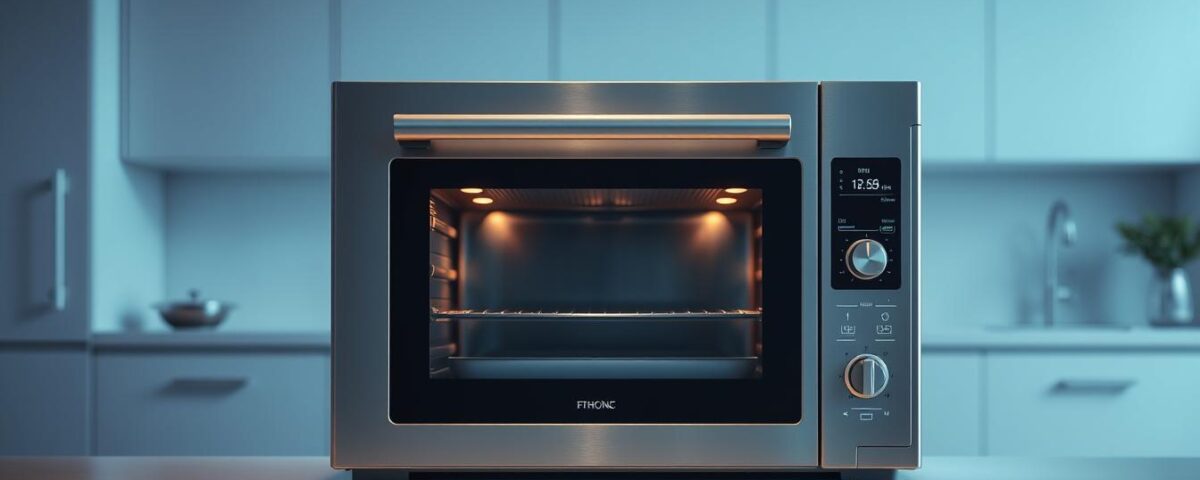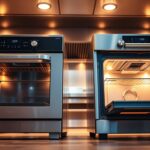
Combi Oven vs Convection Oven: Which Boosts Yield More?
September 26, 2025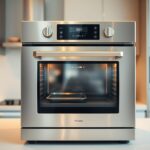
I Baked, Steamed, and Roasted with 4 Combi Ovens—Only One Excelled
September 26, 2025As a restaurant owner, I’ve seen firsthand how commercial kitchen equipment can make or break a business. One of the most significant investments for any commercial kitchen is a combi oven, a versatile piece of equipment that can replace multiple cooking appliances, saving both space and money.
Did you know that combi ovens can lead to substantial long-term savings through reduced labor, food, and energy costs? With the initial investment being a significant upfront cost, leveraging rebate programs can make a big difference. In this guide, I’ll walk you through the best tips to make your combi oven purchase more affordable while maximizing your return on investment.
Key Takeaways
- Understand how combi ovens can benefit your commercial kitchen.
- Learn about available rebate programs to reduce upfront costs.
- Discover strategies to maximize operational savings.
- Make an informed decision when investing in a combi oven.
- Maximize your return on investment with the right equipment.
Understanding Combi Ovens and Their Cost-Saving Potential
Combi ovens are revolutionizing commercial kitchens with their unique cooking capabilities. These versatile appliances combine the functions of convection ovens, steamers, and sometimes even proofers, making them an indispensable tool for modern restaurants.
What Makes Combi Ovens Unique
Combi ovens stand out due to their ability to cook a wide variety of dishes with precision and consistency. They offer a unique combination of cooking modes that cater to different culinary needs, making them an essential piece of equipment for any commercial kitchen.
The Three Cooking Modes: Convection, Steam, and Combination
Combi ovens operate in three primary modes: convection, steam, and a combination of both. This versatility allows chefs to cook a range of dishes, from roasted meats to steamed vegetables, using a single appliance. The combination mode, in particular, enables the preparation of complex dishes that require both dry heat and moisture.
Initial Investment vs. Long-Term Savings
While combi ovens typically require a higher initial investment, ranging from $5,000 to $30,000, they offer significant long-term savings. These savings are achieved through reduced energy consumption, lower equipment maintenance costs, and improved food quality, which can lead to increased customer satisfaction and revenue.
| Benefits | Description | Cost Savings |
|---|---|---|
| Energy Efficiency | Modern combi ovens are designed to use less energy than traditional cooking equipment. | Up to 30% reduction in energy costs |
| Reduced Equipment Needs | The versatility of combi ovens means restaurants can reduce their overall equipment needs. | Potential savings of thousands on kitchen setup costs |
| Improved Food Quality | Combi ovens produce consistent, high-quality food, leading to less waste and higher customer satisfaction. | Increased revenue through improved customer satisfaction |
How to Reduce Combi Oven Cost Through Rebate Programs
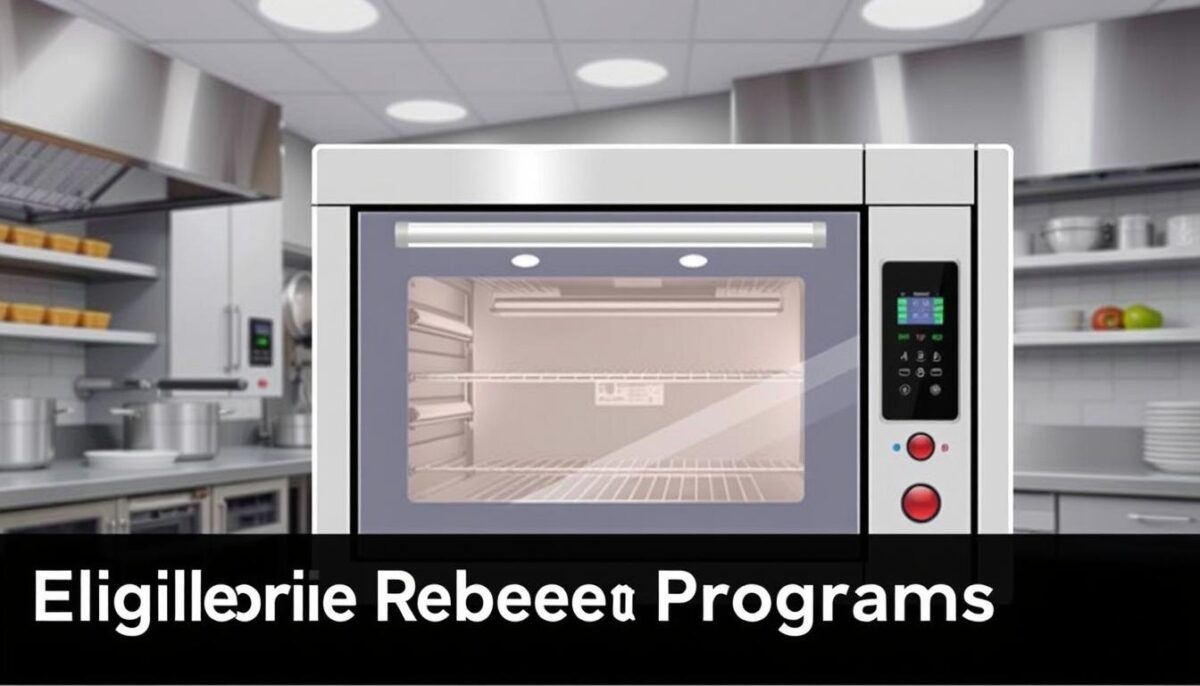
To make combi ovens more affordable, various rebate programs are available that can significantly lower their upfront cost. These programs are designed to encourage the adoption of energy-efficient equipment in commercial kitchens.
Energy Efficiency Rebates from Utility Companies
Many utility companies offer rebates to businesses that install energy-efficient combi ovens. These rebates can help offset the higher upfront cost of purchasing a combi oven. For instance, utility companies may provide rebates for equipment that meets specific energy efficiency standards.
Manufacturer Rebates and Promotional Offers
Combi oven manufacturers often have their own rebate programs or promotional offers. These can include discounts, free accessories, or other incentives that can reduce the effective cost of the equipment. It’s essential to check with the manufacturer or dealer for any available offers.
Tax Incentives for Energy-Efficient Commercial Kitchen Equipment
The IRS tax code, specifically Section 179, allows businesses to deduct the full purchase price of qualifying equipment, including energy-efficient combi ovens, up to certain limits. Additionally, the Energy-Efficient Commercial Buildings Tax Deduction (Section 179D) can provide further tax benefits for restaurants that install energy-efficient kitchen equipment as part of broader building improvements. Some states and local governments also offer additional tax incentives for energy-efficient commercial equipment.
To maximize these benefits, it’s recommended to consult with a tax professional who specializes in restaurant or commercial kitchen operations. Keeping detailed records of the purchase, including energy efficiency specifications, is crucial for claiming these tax incentives. By combining tax incentives with utility and manufacturer rebates, the effective cost of a combi oven can be reduced by 30-50%, making it a more affordable investment.
Maximizing Operational Savings with Your Combi Oven
The versatility of combi ovens allows for a range of cooking techniques that can lead to significant operational savings. By understanding how to optimize the use of your combi oven, you can reduce costs across various aspects of your kitchen operations.
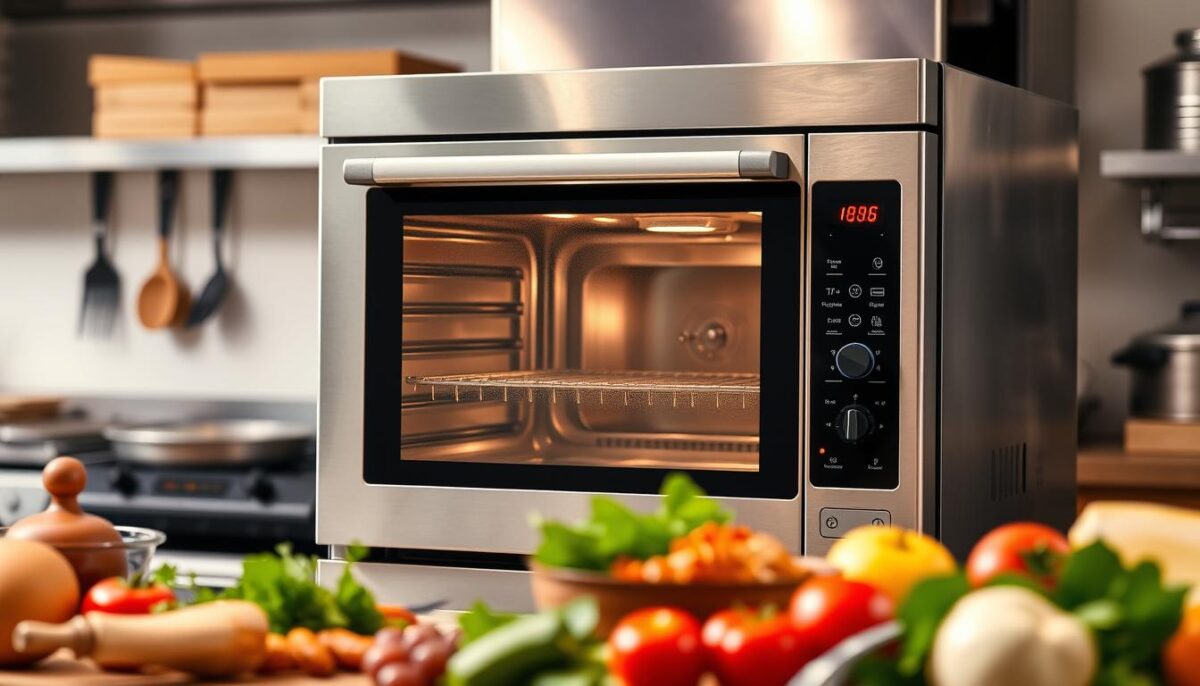
Labor Cost Reduction Strategies
One of the key ways to maximize operational savings is by reducing labor costs. Combi ovens can help achieve this by streamlining cooking processes and allowing for the preparation of multiple dishes simultaneously. This not only saves time but also reduces the need for extensive labor, thereby lowering costs. Implementing efficient cooking schedules and training staff to fully utilize the combi oven’s capabilities can further enhance labor cost savings.
Food Cost Savings Through Reduced Waste
Combi ovens contribute to food cost savings by enabling precise cooking control, which reduces food waste. The ability to cook a variety of dishes to the exact required specifications means less overcooking or undercooking, resulting in less waste. Additionally, the combi oven’s capacity to cook multiple items at once allows for better inventory management, reducing the likelihood of expired or spoiled ingredients.
Energy and Water Conservation Techniques
Modern combi ovens are designed with energy and water efficiency in mind. Features such as triple-glazed doors, advanced insulation, and intelligent power management systems significantly reduce energy consumption. Moreover, combi ovens can reduce water usage by up to 53% compared to traditional steaming methods. By optimizing the use of these features and ensuring regular maintenance, kitchens can achieve substantial savings on utility bills.
By implementing these strategies and fully leveraging the capabilities of your combi oven, you can achieve significant operational savings, enhancing your kitchen’s efficiency and bottom line.
Conclusion: Making the Smart Investment in Combi Oven Technology
By integrating combi ovens into their kitchen, restaurants can significantly enhance their cooking efficiency and reduce operational costs. The combination of rebate programs and operational savings makes combi ovens a smart financial decision for any commercial kitchen.
To maximize savings, it’s essential to explore all available rebate options, including utility rebates, manufacturer promotions, and tax incentives. Starting the rebate research process at least 3-6 months before purchasing a combi oven can help identify potential savings opportunities and meet application deadlines.
Beyond the initial purchase savings, combi ovens continue to deliver value through reduced labor, food, and energy costs. As minimum wages rise and skilled kitchen staff becomes harder to find, the labor-saving benefits of combi ovens become even more valuable. I recommend contacting utility providers, equipment dealers, and tax professionals to explore how to reduce the cost of investing in combi oven technology.
FAQ
What are the benefits of using a combi oven in my commercial kitchen?
Combi ovens offer multiple cooking modes, including convection, steam, and combination, allowing for faster cooking times, reduced labor, and improved food quality. They also help conserve energy and water, leading to long-term savings.
How do I qualify for energy efficiency rebates from utility companies for my combi oven?
To qualify, you’ll typically need to purchase an Energy Star-rated combi oven and provide proof of purchase to your utility company. They may also require installation verification and other documentation.
Can I use a combi oven for steaming, baking, and roasting simultaneously?
Yes, many modern combi ovens allow for multiple cooking modes and dishes to be cooked simultaneously, making them ideal for high-volume kitchens with varied menus.
How do combi ovens help reduce food waste in my kitchen?
By allowing for precise temperature and moisture control, combi ovens enable chefs to cook ingredients to the perfect doneness, reducing the likelihood of overcooking or undercooking, which can lead to waste.
Are there any tax incentives available for purchasing energy-efficient commercial kitchen equipment like combi ovens?
Yes, there may be federal, state, or local tax incentives available for businesses that invest in energy-efficient equipment, including combi ovens. Consult with a tax professional to determine the specific incentives available to your business.
How can I maximize the operational savings with my combi oven?
To maximize savings, focus on labor cost reduction strategies, such as streamlined menu planning and efficient cooking workflows, and implement energy and water conservation techniques, like optimizing cooking times and temperatures.
